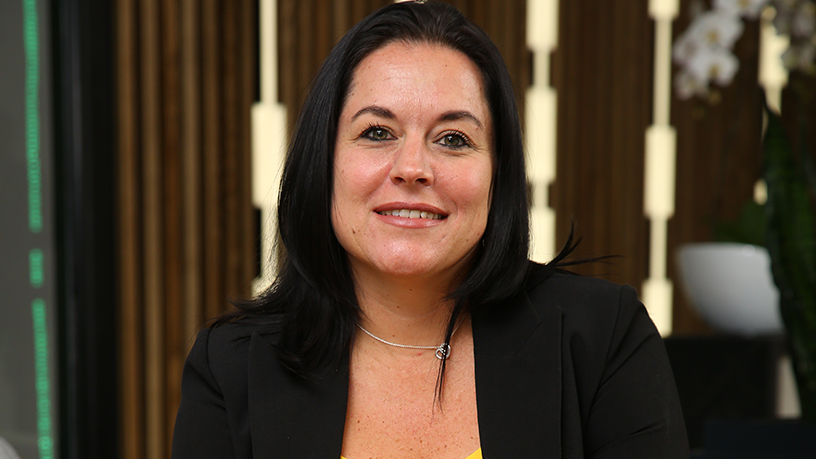The recent drafting of South Africa’s national policy framework for artificial intelligence (AI) by the Department of Communications and Digital Technologies is a significant milestone for the nation.
By Mandy Duncan, country manager for HPE Aruba Networking South Africa
As the department describes it, this framework is the “first step” in crafting a comprehensive national AI policy. Importantly, as AI introduces new surfaces for potential attacks, it also presents a timely opportunity for the newly elected coalition government to reassess and fortify South Africa’s broader cyber security policies and measures.
Huge potential exists in South Africa’s rapidly developing cyber landscape, which is unlocking new ways of working while creating jobs to grow every sector of the local economy. However, this also means the risks associated with an increasingly digital economy need to be addressed with practical actions.
It’s been almost 10 years since the local government in South Africa published its National Cybersecurity Policy Framework (NCPF) to enhance cyber security measures across the country.
While the framework was a step in the right direction for all local organisations to approach cyber risk, a current and detailed policy framework is needed to offer instruction into how organisations can improve in key areas such as Network security, particularly against the backdrop of a constantly evolving threat landscape.
One recent development, for example, that requires closer consideration is the hybrid working revolution. Hybrid- and remote-work models have brought greater flexibility to employees and uninterrupted productivity for organisations, but cyber security becomes more complex when a business is dealing with a dispersed workforce.
Implementing an edge-to-cloud approach
In the past, businesses hosted the bulk of their applications and services in their on-premise datacentres, with enterprises applying a “castle-and-moat” security model in which no one outside the network can access data on the inside, but everyone inside the network can. Although this security mode can employ technology such as firewalls to protect against external attacks, they are not effective at stopping internal attacks and data breaches.
Today, organisations are embracing a cloud-first approach that necessitates a far more sophisticated network architecture to maintain a secure and effective experience.
Since most applications have migrated to the cloud, businesses now have the opportunity to reduce latency with a distributed security model.
By deploying cloud-based technologies such as an advanced Software-Defined Wide Area Network (SD-WAN) and Security Service Edge (SSE) solution, IT teams are empowered to simultaneously secure the corporate network and improve the end-user experience.
With such technology in place, traffic generated from hybrid-work employees can be sent to a cloud-delivered security service that enforces access policies and delivers smooth connectivity.
Deploying an integrated network security framework
Workplace technologies (and the strategies that govern them) must continuously keep up with the demands of hybrid work and the ever-evolving threat landscape. An updated cyber security framework should therefore reflect the technology requirements for these adaptations.
That’s why secure access service edge (SASE), a combination of the two “technology sets” — SD-WAN and SSE — spanning core security principles such as Zero Trust, must become a central part of a modern organisation’s IT security strategy. SASE takes a Zero Trust (never trust, always verify) approach to access privileges and user-identity security, applying this even if users access cloud-based applications remotely and not directly through the corporate network.
By deploying a Zero Trust-based SASE framework, the organisation is well placed to streamline its security operations in a way that also enables the “work from anywhere” trend by reducing cyber breaches.
Expanding the boundaries of safe ‘in-office experiences’
Managing security from a single point of visibility and control, whether you are on the corporate network (through a wired, wireless, or wide-area network (WAN) connection) or accessing remotely is also important.
Hybrid workgroups across home offices and remote locations have placed immense pressure on IT teams, who now must secure a wider range of connected devices than ever before. Without unified security policies, IT teams find themselves having to manually gather data from several disparate tools, which is complex and takes much longer.
As such, organisations must embrace technologies that can address fragmented network operations while uniformly applying Zero Trust policies with architectures such as SASE. The enablement of stronger, secure supervision of application access and easier centralised management via a single cloud-native point of control makes it easier for senior management to have a holistic view and simple understanding of their organisation’s security.
By striking a balance between strong security, location-flexibility, and employee responsibility when dealing with application access, organisations can ensure employee experience and future innovation, doesn’t increase their vulnerability to cyberattacks. The provision of a framework that outlines the intricacies of this approach, would go a long way to helping strengthen the country’s national cyber security.

